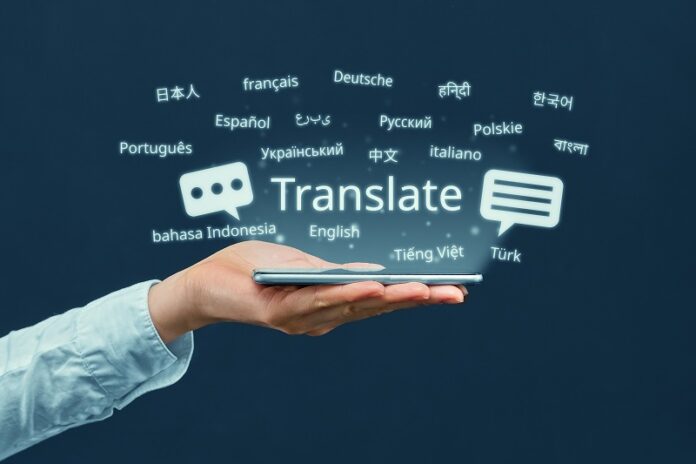In today’s interconnected world, where communication knows no borders, translation apps have become invaluable tools for bridging language barriers. Whether you’re a business exploring international expansion or a professional translator navigating your clients’ global business needs, translation apps offer convenience and accessibility in overcoming language obstacles.
In this short yet practical guide, we will explore the usefulness of translation apps, exploring their features, benefits, and how they can enhance communication across different contexts and for different translating purposes.
Convenience and Accessibility
To begin with, the best translation apps provide unparalleled convenience and accessibility in the palm of your hand compared to all other manually-driven translation practices and processes, such as working with spreadsheets or using text-based documents for translation. With the help of your chosen translation app, you can instantly translate words, phrases, or entire sentences in just a few taps.
In addition, these apps offer a user-friendly interface, allowing you to input text quickly or even utilize voice recognition for effortless translations on the go. They also support a wide range of languages, enabling effective communication across diverse linguistic landscapes.
Gone are the days of carrying bulky dictionaries or relying on unreliable translation services. Translation apps have revolutionized language assistance, making it readily available at your fingertips.
Cost-Effective Solution for Localization Efforts
Among other things, website translation apps are crucial in facilitating practical and cost-effective business localization efforts when businesses expand internationally. These apps are essential tools for bridging language gaps and enabling seamless communication with target markets.
By utilizing a professional translation app, businesses can swiftly translate various content types, including websites, product descriptions, marketing materials, and customer support communications. To ensure that their messaging resonates with local audiences and avoid potential misinterpretations or cultural faux pas, it’s important to have a human translator take a look at the translated content and edit any issues in a process called post-editing.
Translation apps also offer various translation capabilities, enabling businesses to engage in live conversations, negotiations, and customer interactions without language barriers hindering the process. Moreover, these apps allow businesses to swiftly adapt to market trends, consumer preferences, and regional dialects, helping them create tailored strategies for specific markets.
With the global marketplace becoming increasingly interconnected, translation apps have become indispensable for businesses seeking successful international expansion through practical localization efforts.
Real-Time Translation
One of the critical advantages of translation apps is their ability to provide real-time translation, making them highly valuable tools for both professional translators and companies alike. Once you choose the best translation app for your needs, you’ll be able to enjoy the instantaneous translation of a text, allowing you to quickly and accurately convert words, phrases, or sentences from one language to another. This feature significantly enhances efficiency and productivity in the translation process, enabling translators to meet tight deadlines and deliver high-quality work.
For translators, real-time translation apps provide a reliable reference tool that ensures accurate and consistent translations. They can easily access and verify the meaning of unfamiliar terms or expressions, ensuring precision in their work. Additionally, these apps help translators maintain language consistency and adhere to specific style guides or terminologies required by their clients or companies.
All in all, real-time translation apps substantially benefit translators and companies by streamlining the translation process, ensuring accuracy, and enabling seamless communication across languages. Embracing these tools can enhance productivity, improve the quality of translations, and contribute to successful global business endeavors.
Language Learning and Pronunciation Assistance
Among other things, translation apps can also be powerful aids in language learning and pronunciation. Many apps even offer audio pronunciation guides, allowing users to listen to the correct pronunciation of words or phrases. This feature enhances language acquisition, helping users develop their speaking skills with authentic and accurate pronunciation.
Furthermore, translation apps often include additional language learning resources, such as flashcards, grammar tips, and cultural insights, providing a comprehensive learning experience. Professional translators, in-house employees, language enthusiasts, and even individuals preparing for language proficiency exams can significantly benefit from these tools, as they offer a convenient way to study and improve language skills.
Offline Capabilities
Last but not least, the offline functionality of translation apps offers significant advantages, specifically for translation professionals and companies, allowing users to access translations without relying on an internet connection.
For translation professionals working in various environments, such as remote locations or areas with unreliable internet access, offline translation is a valuable asset. It ensures that translators can continue their work seamlessly, regardless of their internet connectivity. They can access and reference translations, terminologies, and other essential resources without interruptions, enhancing their productivity and accuracy.
In the context of companies, offline translation capabilities enable businesses to work efficiently even in the case of limited or restricted internet access. Companies with global operations or language service providers can ensure uninterrupted translation workflows, allowing their teams to work on projects regardless of their physical location or internet availability. This feature also proves beneficial during business travel, conferences, or collaborating with international partners or clients in areas with connectivity challenges.
Final Thoughts
Translation apps have transformed the way we communicate in a globalized world. Their convenience, real-time translation, language learning features, and offline capabilities make them indispensable tools for both personal and professional use.
Whether conducting business, translating for a client, or expanding your language skills, translation apps offer a practical and effective solution for breaking down language barriers. Embrace the power of translation apps and unlock a world of possibilities where communication knows no limits.





